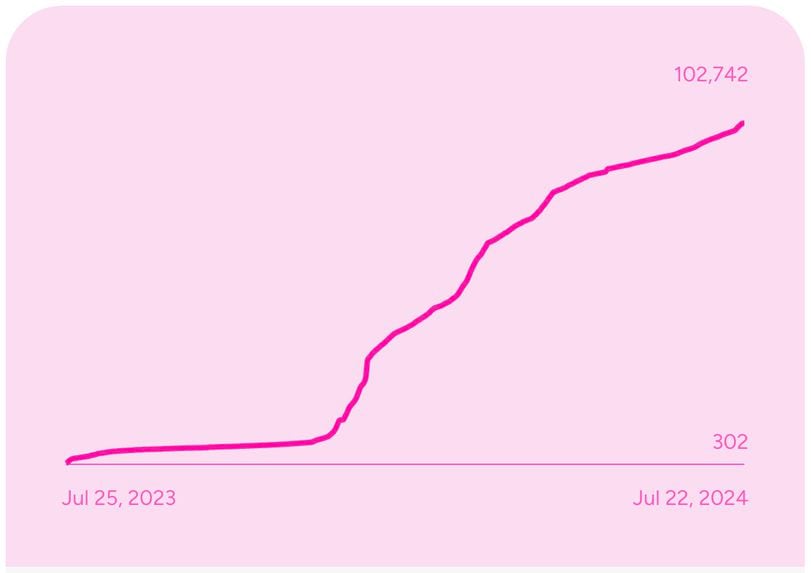Shares of Applied Materials (NASDAQ: AMAT) have delivered gains of 28% so far in 2024 despite undergoing a sharp pullback since hitting a 52-week high on July 10. And there is a good chance that this supplier of semiconductor manufacturing equipment could end the year with more upside.
The company released fiscal 2024 third-quarter results (for the three months ended July 28) on Aug. 15. Its revenue and earnings were better than investors had expected, while the guidance also exceeded expectations.
Let's take a closer look at Applied Materials' latest quarterly performance and check why this chip equipment supplier seems built for more upside.
AI is expanding Applied Materials' addressable market
Applied Materials delivered record revenue of $6.78 billion in its fiscal third quarter, an improvement of 5% from the same period last year. The company's adjusted earnings per share increased 12% year over year to $2.12. Wall Street would have settled for $2.03 per share in earnings on revenue of $6.68 billion.
Even better, its guidance exceeded consensus estimates. The company is expecting fiscal fourth-quarter revenue of $6.93 billion, along with $2.18 per share in earnings at the midpoint of its guidance range. The forecast is slightly better than Wall Street's expectations of $2.12 per share in earnings on revenue of $6.92 billion.
The stock slipped despite posting better-than-expected results and guidance. That's probably because investors were expecting more growth on the back of the increasing demand for AI chips, which are leading to stronger investments in chipmaking equipment by foundries and chipmakers.
But management said that weaknesses in the automotive and the industrial markets have been weighing on its performance. The company expects that weakness to fade in the long run thanks to the growth of electric and autonomous vehicles, as well as the adoption of the Internet of Things within the industrial market.
Investors should note that AI probably represents the largest growth opportunity for Applied Materials. It's counting on a transition to the gate-all-around (GAA) transistor architecture from the fin field-effect transistor (FinFET) architecture to help drive its growth.
Chipmakers and foundries have been adopting the GAA architecture to manufacture AI chips because of its ability to deliver increased performance and reduce power consumption simultaneously. GAA is playing a central role in the manufacturing of chips based on a 3-nanometer process node, and the 3nm chip market could clock annual growth of almost 39% through 2030.
Applied Materials management said on its latest earnings conference call that the move from FinFET to GAA transistors grows its available market.
The company is also benefiting from the fast-growing adoption of high-bandwidth memory (HBM), which is deployed in AI graphics cards from the likes of Nvidia and AMD . The company's revenue from HBM packaging is forecast to jump by a multiple of 6 in 2024 to $600 million from last year's levels. This represents another healthy growth opportunity for Applied Materials because the HBM market is forecast to clock 68% annual growth through 2030.
The above-mentioned drivers indicate an improvement in Applied Materials' growth rate in the coming years. The huge demand for AI chips and an improvement in the automotive and industrial markets are probably why analysts expect the company's top line to increase at a healthier pace over the next couple of fiscal years following a low-single-digit jump in the current year to $27 billion.
How much upside can investors expect?
The acceleration in Applied Materials' revenue growth is set to filter down to the bottom line as well. The company's earnings came in at $8.05 per share in fiscal 2023, and the current year's estimate points toward an increase of just 4%, as we can see in the chart below.
However, Applied Materials' earnings are expected to increase at a double-digit rate over the next couple of fiscal years, with analysts predicting a compound annual growth rate of 15% for the next five years. Based on the company's fiscal 2024 earnings forecast of $8.42 per share, they could hit $16.94 after five years.
The stock is currently trading at 22 times forward earnings, a discount to the Nasdaq-100 index's forward price-to-earnings multiple of 27 (using the index as a proxy for tech stocks). Assuming Applied Materials trades at a similar multiple after five years, its stock price could jump to $373. That would be an 80% increase from current levels.
And if the market decides to reward the company with a higher earnings multiple because of an improvement in its growth, it could deliver stronger gains over the next five years. So, investors looking to add an AI stock that's trading at an attractive valuation to their portfolios right now would do well to take a closer look at Applied Materials.
Before you buy stock in Applied Materials, consider this:





